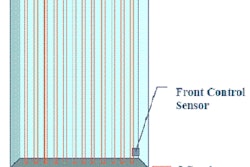SAN ANTONIO - No one can argue that the volume of diagnostic imaging hasn't increased exponentially over the past decade. And by all accounts, usage will continue to increase as advanced imaging applications enable adoption of less invasive, more precise therapies, according to a presentation at the American Healthcare Radiology Administrators (AHRA) annual meeting.
"Imaging is fundamental to patient management, and the scope of imaging technology and practice is expanding," said Michael Silver, Ph.D., vice president of Sg2, an Evanston, IL-based healthcare consulting firm.
Silver shared his thoughts on the clinical and operational impact of emerging imaging technologies in a keynote presentation on Monday. According to Silver, imaging is a technology-enabled and highly competitive clinical service business that has outgrown the exclusive practice and control of radiology.
The success of noninvasive imaging in patient management has led to its widespread use by almost all medical specialties, either performing the services themselves or increasing their ordering of diagnostic imaging exams, Silver explained. Because so much of medicine is dependent on its services, he believes that imaging will become only a node on the clinical operations network in a decentralized hospital enterprise.
This does not mean that radiology practitioners will be marginalized by other specialties; rather, he sees the field evolving into providing both fundamental clinical tools and strategic practice services.
Technology
Imaging service is not about having the latest and greatest technology, according to Silver. He holds that technology is a tool that can be used to achieve successful outcomes -- but only through excellent execution.
"Anyone can buy the technology that can make you successful; great service and execution is very hard to duplicate," he said.
The reality being faced by many nonradiology adopters of high-end imaging equipment, such as 3-tesla MRI systems and 64-slice CT scanners, is that the modalities are not only expensive to buy, they're expensive to maintain.
"Investing in imaging technology is like a country club membership: there's a whole lot of investment up front and then there are annual dues that seem to rise year after year," he observed.
As such, he holds that a technology adoption game plan is essential for a facility to put in place.
"There is more good technology than most institutions can buy," he noted.
Silver said that success depends on the delivery of basic business issues such as:
- A customer-focused service business
- Consistently adding clinical value that consistently makes a difference
- Quality reports
- Excellent radiology business management
- A strategic technology adoption process for both hospitals and radiology practices
- Strategic radiology management and execution
Reimbursement and growth
Silver holds that reimbursement will reshape the competitive landscape in imaging services. He foresees a normalization of inpatient and outpatient reimbursement coupled with a market acceptance of designated readers of radiological images. In addition, he holds that government and private payors will tighten reimbursement controls not just on the provision and interpretation of diagnostic images, but on the quality of the exam and subsequent report as well.
Silver forecast that advanced outpatient volumetric imaging will lead exam growth over the next five years. He sees the use of CT angiography rising more than 600% by 2010, MR angiography growing more than 200%, and PET usage increasing by nearly 200% in the same five-year period.
"CT, MRI, and PET advanced applications for cardiovascular and oncology markets will lead imaging volume growth, and these are prime markets for nonhospital-based competition," he said.
RIS, PACS, and other information technology initiatives such as an integrated electronic medical record (EMR) will become increasingly necessary as diagnostic imaging services continue to grow. Silver noted that all medical imaging equipment vendors now assume that their scanners and systems will be attached to a PACS.
In addition, as surgical pathology continues its growth and digitization, more departments will want integrated medical records that contain radiology and pathology images and reports. This will create broader imaging platform expectations.
"Radiology and pathology imaging, analysis applications, and PACS resources will all be on the network," Silver said. "Radiology and pathology will 'work' the network."
Future practice
The current focus of radiology practice to establish and maintain its market position within a geographically limited region may undergo a radical shift in the future, according to Silver. He postulated that we may see the evolution of network-based, market dominating, megaradiology practices.
These megagroups will leverage their size across an entire network of healthcare providers to compete in a market. They will have joint venture relationships with multiple organizations and specialties, and will be able to provide contracted commodity and specialty market carve outs as a result, he said.
Ultimately, quality patient care coupled with market forces and technological innovation will drive the shape of radiology practices in the future. But, according to Silver, this will not come easily.
"As Dr. Daniel Federman, an associate dean at Harvard Medical School observed: 'We in medicine love progress … but we don't like change,' " Silver said.
By Jonathan S. Batchelor
AuntMinnie.com staff writer
August 9, 2005
Related Reading
3D navigation holds promise for image overload, July 11, 2005
CARS panel discusses the future of CAD, June 28, 2005
CARS suite of the future sees key role for image-guided intervention, June 23, 2005
Medicare's condition in 2005: critical, June 15, 2005
Self-referral puts serious crimp in rad residents' educational experience, June 7, 2005
Copyright © 2005 AuntMinnie.com



















